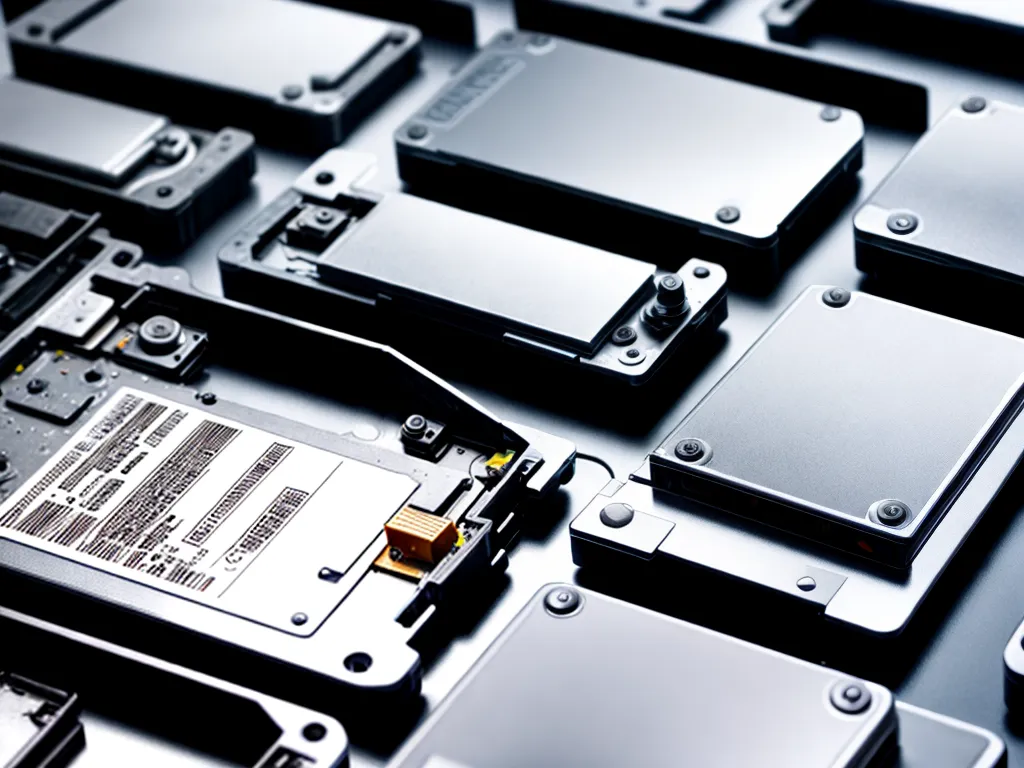
Solid state drives (SSDs) are becoming increasingly common in computers and other devices. Unlike traditional hard disk drives (HDDs), SSDs have no moving parts and store data in flash memory chips. This makes them faster, more durable, and power efficient than HDDs. However, it also changes how deleted files can be recovered.
Why Deleted Files Can’t Be Recovered From SSDs
When a file is deleted from a traditional HDD, the file isn’t actually removed from the disk. Instead, the reference to the file’s location on the disk is removed from the file table. The file’s data remains in place until it is overwritten by new data. This makes it possible to recover deleted files using data recovery software as long as the file hasn’t yet been overwritten.
SSDs work differently. When a file is deleted, the SSD controller immediately erases the file data from the flash memory cells and writes new data in its place. This is done to maintain even wear across the SSD and optimize performance. The result is that deleted files are erased almost instantly on an SSD, making recovery impossible through software alone.
When File Recovery Is Possible on an SSD
While recovering deleted files directly from an SSD is typically impossible, there are a few cases where recovery can be achieved:
-
If the deleted file was on an SSD but you also had backups on an external HDD, you may be able to restore the deleted file from backup. This is why regular backups are recommended.
-
If you delete a file and then immediately power off the SSD before more data is written, a forensic data recovery service may be able to extract the deleted file. However, this is expensive, results aren’t guaranteed, and it requires immediately powering off the SSD.
-
File recovery software can sometimes recover deleted files on an SSD if the deleted file was in a section of the SSD that hasn’t been reused yet. But you would have no way of knowing if the deleted file’s data is still present.
-
Enabling the “secure delete” function on an SSD will prevent any chance of recovery. Data is immediately overwritten where deleted files were stored.
Best Practices for Minimizing File Loss on an SSD
Since reliably recovering deleted files from an SSD is difficult, it’s best to take steps to avoid file loss in the first place:
-
Have a good backup solution, such as an external HDD or cloud backup, and regularly back up important files.
-
Be careful when deleting files and use your computer’s Recycle Bin.
-
Enable Recycle Bin protection for SSD drives to minimize accidental file deletion.
-
Don’t fill up the SSD completely. Maintain at least 15% free space for optimal performance and to reduce the chance of file overwrites.
-
Disable har drive optimization utilities that overwrite deleted file areas.
-
Use the SSD’s built-in secure erase function sparingly, as it makes file recovery impossible.
Recovering Files By Sending Away the SSD
As a last resort, you can remove the SSD and send it to a forensic data recovery company. They can attempt to recover deleted files by working at the lowest disk level to extract raw data. However, this is expensive, takes time, and has no guarantee of success. So it should only be done for extremely important lost files that cannot be recovered any other way.
In Summary
While SSDs provide many benefits like speed, durability, and efficiency, their handling of deleted files makes data recovery difficult compared to traditional hard drives. Taking preventative measures like backups and Recycle Bin protection is key. But if critical file loss occurs on an SSD, recovery options beyond that are limited without sending the SSD to a professional recovery service.












